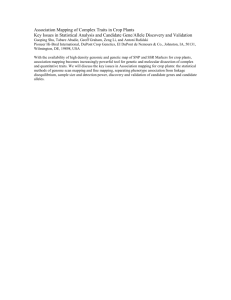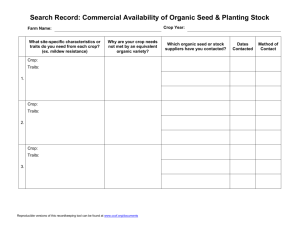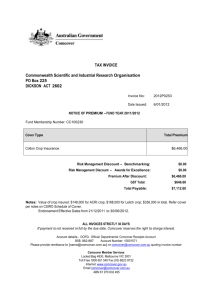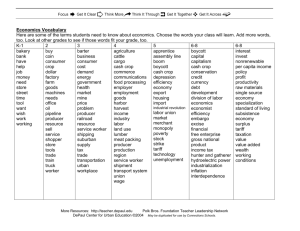Model-based optimization of crop management for climate forecast
advertisement
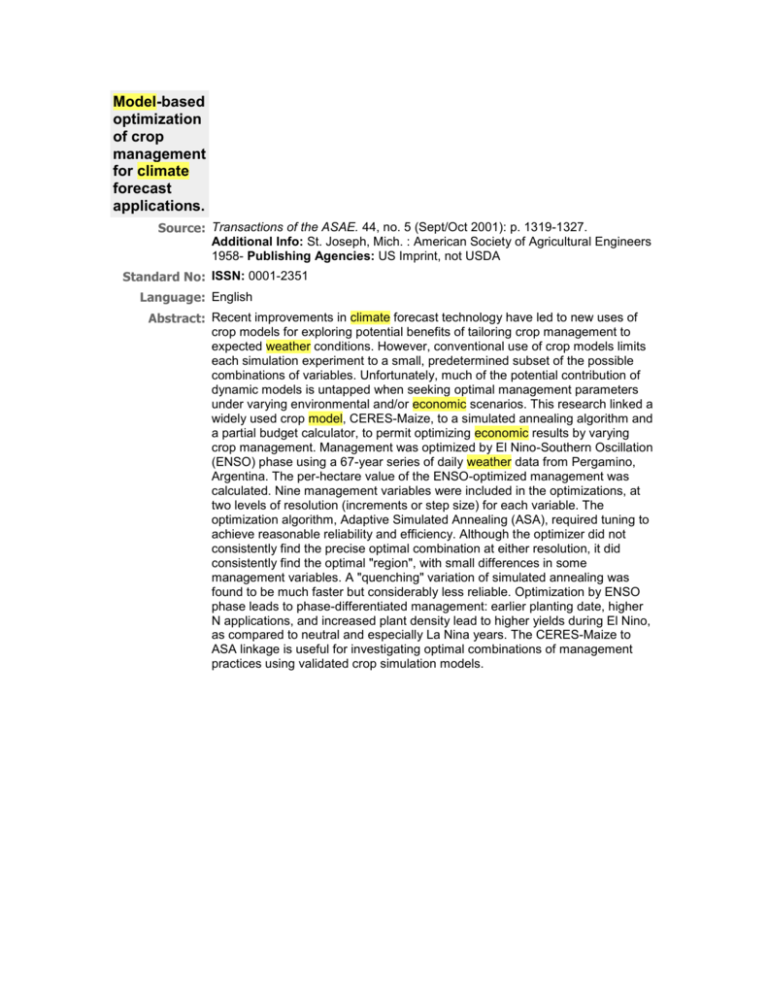
Model-based optimization of crop management for climate forecast applications. Source: Transactions of the ASAE. 44, no. 5 (Sept/Oct 2001): p. 1319-1327. Additional Info: St. Joseph, Mich. : American Society of Agricultural Engineers 1958- Publishing Agencies: US Imprint, not USDA Standard No: ISSN: 0001-2351 Language: English Abstract: Recent improvements in climate forecast technology have led to new uses of crop models for exploring potential benefits of tailoring crop management to expected weather conditions. However, conventional use of crop models limits each simulation experiment to a small, predetermined subset of the possible combinations of variables. Unfortunately, much of the potential contribution of dynamic models is untapped when seeking optimal management parameters under varying environmental and/or economic scenarios. This research linked a widely used crop model, CERES-Maize, to a simulated annealing algorithm and a partial budget calculator, to permit optimizing economic results by varying crop management. Management was optimized by El Nino-Southern Oscillation (ENSO) phase using a 67-year series of daily weather data from Pergamino, Argentina. The per-hectare value of the ENSO-optimized management was calculated. Nine management variables were included in the optimizations, at two levels of resolution (increments or step size) for each variable. The optimization algorithm, Adaptive Simulated Annealing (ASA), required tuning to achieve reasonable reliability and efficiency. Although the optimizer did not consistently find the precise optimal combination at either resolution, it did consistently find the optimal "region", with small differences in some management variables. A "quenching" variation of simulated annealing was found to be much faster but considerably less reliable. Optimization by ENSO phase leads to phase-differentiated management: earlier planting date, higher N applications, and increased plant density lead to higher yields during El Nino, as compared to neutral and especially La Nina years. The CERES-Maize to ASA linkage is useful for investigating optimal combinations of management practices using validated crop simulation models.


